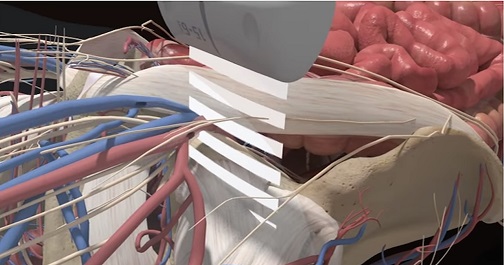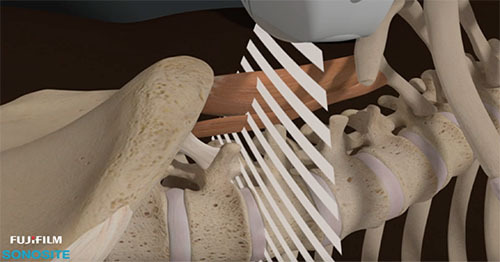
Courses
The following point-of-care ultrasound courses are recommended for you based on what we know about your interests. You can follow the suggested curriculum, or explore other materials at your own pace. To view other available courses, click the courses button at the top of this page.


Ocular Ultrasound
The eye can easily be visualized using ultrasound. Pathologies such as retinal detachment, vitreous detachment/hemorrhage, abnormal intracranial pressure, papilledema, and ruptured globe can be identified even by the novice users of ultrasound. Learn which transducers, exam types, and gain/depth settings are ideal for ophthomalogical imaging.

Opioid Reduction in Anesthesia
This course highlights the basics on various nerve blocks that can be used to reduce opioid prescriptions while providing effective, non-addictive pain control in the anesthesia setting. Review point-of-care ultrasound techniques to help manage your patients' post-op pain as part of the Enhanced Recovery After Surgery (ERAS) protocol.

Opioid Reduction in Chronic Pain
This course highlights the basics on various nerve blocks that can assist patients who suffer from chronic pain, reducing the need for opioid prescriptions. Learn more about the growing opioid crisis and steps that can be taken in the your practice to reduce this epidemic.

Opioid Reduction in Emergency Medicine
This course highlights the basics on various nerve blocks that can be applied to the emergency department setting to reduce the need for opioid prescriptions while treating patients' acute, traumatic pain. Learn more about the growing opioid crisis and steps that can be taken in the emergency department to reduce this epidemic.

Paravertebral Nerve Block
How should you position a patient for comfort during a paravertebral nerve block? How do you know that you are injecting local anesthetic into the paravertebral space? How does the parietal pleura appear on ultrasound? These questions and more are answered in the Paravertebral Nerve Block course.

Pelvic: First Trimester Pregnancy Evaluation
Understand the basic ultrasound views and techniques associated with performing an ultrasound pelvic examination for first trimester pregnancy, surrounding anatomical structures, and proper equipment settings. In addition, support literature, case studies, pathology images, and videos may be included for review.

Perioperative Ultrasound
This course combines concepts and applications that are encountered in perioperative ultrasound. Take your time and explore sections on airway management, evaluating for gastric content, cardiac views, advanced cardiac imaging, the eFAST exam, the RUSH exam, lung ultrasound and assessment, and ocular pathologies.
As you progress, earn certificates of completion in eFAST, Cardiac Imaging 1, Lung, Ocular, and RUSH with an 80% on higher on each post-test! These passed tests are required prior to taking the Perioperative Ultrasound post-test.

PIV Peripheral Intravenous Catheter Access
Gain an understanding of the procedures and techniques used to place a peripheral line using ultrasound guidance. Learn to identify adjacent anatomical structures and how to master the correct equipment settings for the procedure.

Popliteal-Sciatic Nerve Block
Review and learn to identify anatomical structures visualized during a popliteal sciatic nerve block with ultrasound guidance; determine the locations of the popliteal artery and vein, and how to locate the perineal and tibial nerve branch, which is ideal for the nerve block placement.

Quadratus Lumborum (QL) Block
The QL block is a fascial plane block allowing for the somatic and visceral analgesia to the abdomen. Three approaches have been described including the anterior, posterior and lateral approach.

RUSH
The RUSH course is designed for medical professionals with comprehensive knowledge of the core underlying concepts of the RUSH protocol, which includes cardiac, Inferior Vena Cava (IVC), eFAST, lung, aorta, and Deep Vein Thrombosis (DVT) ultrasound examinations. Learn the RUSH protocol for assessing patients in shock.

